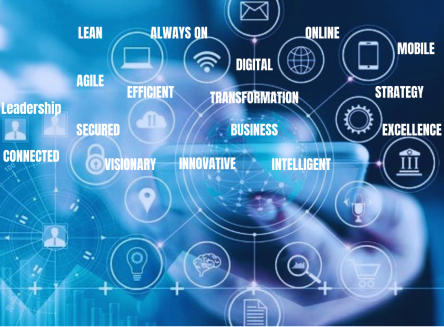Benefits of SaaS Service Model
Cloud Computing SaaS Model offers the full stack of ICT service and full stack means it delivers an IT Solution for the organisation. The key benefits of SaaS service model can be listed as follows,
- One Standard Solution: SaaS solutions are made using industry standard best practice business processes for making them adaptable and fit for entire industry. The SaaS solution offering is standard and available across the whole organisation for use based on needs. This gives the organisation real time usage across the world and more importantly saving ICT costs of duplicate or different solution at different locations.
- Self Service Model: SaaS solution offering works on self-service model where by the business users can choose and pick the services options they need. The solution support issues are also self-service based making the business users to check and receive support from one central support.
- Pay for Use: SaaS solution offering allows organisations to pay for use, it means organisation do not incur or worry about ICT additional costs as they pay only for number of users using the specific service(s).
- Reduced Costs: SaaS solution offering allows organisations to reduce their ICT capital expenditure costs as the solution is ready to use and minimal to no upfront investment required to start using the SaaS solution. On the other hand as there is no ICT Infrastructure and other components ownership, the organisation only incurs the usage costs and has ease of ramp up and ramp down usage, thus allowing higher flexibility.
- Faster Time to Market: SaaS solution offering reduces the time for preparation and deployment to the lowest possible as the solution is available for use and requires minimum configuration, setup and user training time to start using the solution. As the whole organisation uses only one solution any changes or new functionality can be also introduced in one go to the whole organisation.
- Standard Interfacing: SaaS solution offerings are used by multiple organisations so these are made using industry standard best practices processes and ICT standard for cross system communications and message exchanges. This makes organisations to connect with their customers and consumers in a standard and easy to use way.
Issues of SaaS Service Model
Cloud computing and SaaS service offering by service providers is still evolving. The key issues of SaaS service model can be listed as follows,
- Security: Security is the key concern for all organisations that think of SaaS Service adoption. This emerges from the fact that everyday unsecured internet sites and at times even the highly secured internet sites are hacked and data is stolen. SaaS service offerings are internet based and concerns organisations have is about securing their identity and organisation data.
- Standards: Cloud computing and SaaS offerings are still evolving and along with them the standards for such services are also still evolving. Type of clouds and mashing of multiple providers e.g. SalesForce.com offering Saas Channel CRM solution while using Amazon IaaS / PaaS service to host it.
- Big Data: Data Management is a growing concern for all organisations and its specially an issue for SaaS service solution as the organisation does not own any solution component and pays only of usage of the services. The concern is how the data captured can be stored in organisations data warehouse with ensuring that the data is encrypted while exchange and securely stored as well as usable for generate reports and insights required for decision making.
- Change: While adoption of SaaS service is fairly simple, the concern and issue is of switching from one SaaS solution to other and how the transition as well as underlying information exchange from one vendor to another vendor to be handled.
- Strategy and Governance: For Cloud Computing Service adoption organisations must have a clear strategy and governance structure and processes. Strategy will help identify in what areas what types of cloud services can be adopted while governance will help ensure clear understanding of roles and responsibilities, compliance and risks.
